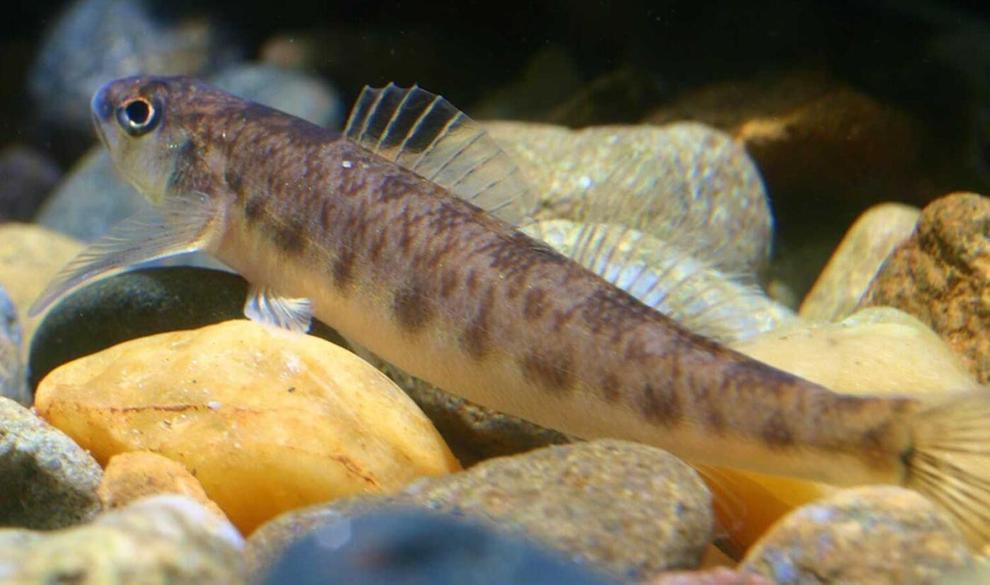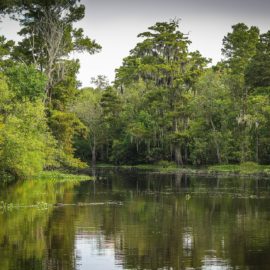
The Pearl Darter is only in Mississippi and remains endangered. Can anything be done to bring it back to the Pearl River?
After decades of lobbying and legal action from environmental groups, the federal government has proposed protecting more than 500 miles of river habitat for the Pearl River’s namesake fish, the Pearl darter. The U.S. Fish and Wildlife Service is considering Endangered Species Act protections for 517 miles of river in 13 Mississippi counties where the endangered Pearl darter still has a few places of refuge. It’s been about 50 years since the darter was spotted in the river it was named after. Dams and industrial pollution likely killed the last darter in the Pearl, which starts in central Mississippi and runs past St. Tammany and Washington parishes, forming Louisiana’s eastern border. The fish once ranged across about 775 miles of rivers and creeks in east Louisiana and Mississippi but now occupies less than half that area, according to Fish and Wildlife Service.
nola.com
Originally, the Pearl Darter was located in Louisiana and Mississippi covering 775 miles of water. It now inhabits less than half of that area now.
Reviving its population in other waterways could allow the darter’s reintroduction in the Pearl someday, said Tierra Curry, a scientist with the Center for Biological Diversity. “The fact that the Pearl darter can’t be found in its namesake river shows the global extinction crisis is unfolding right here, in the rivers of the southeastern United States,” she said. The darter is a 2.5-inch-long, snub-nosed fish that typically hides among riverbottom rocks to pounce on insects and tiny crustaceans.

U.S. Fish and Wildlife Service
By designating a habitat for the fish, it could work to improve the surrounding area.
Designating areas as critical habitat for the fish could limit various human activities that affect water quality, flows, temperatures and other factors. It could also trigger federal funding for habitat restoration, wastewater treatment facility upgrades, and programs that encourage better management of soil and water. The habitat proposed for protection is found in Clarke, Covington, Forrest, George, Greene, Lauderdale, Jackson, Jones, Newton, Perry, Simpson, Stone and Wayne counties. No habitat protections are proposed in Louisiana because the state no longer has Pearl darters to protect. It’s unclear how the protections might affect a proposed Pearl River flood control project near Jackson, Mississippi, known as ‘One Lake.’ The project has already stirred up controversy over its possible environmental impacts in St. Tammany and other downriver areas.
Once again politics enter the protection of the Pearl Darter.
The wildlife service listed the darter as endangered in 2017 after a lengthy review process that started in 1999. But the service, then led by President Donald Trump’s administration, failed to designate protected habitat, the usual next step after a species is declared endangered. In January, the Center for Biological Diversity sued the service over the delay. The service, now led by an appointee of President Joe Biden, appears poised to grant habitat protections. The service will accept comments about the proposed protections until Sept. 11. Comments can be sent via regulations.gov using the search term FWS–R4–ES–2020–0062, the darter’s rulemaking docket number, or by mail: Attn: FWS–R4–ES–2020–0062, U.S. Fish and Wildlife Service, MS: PRB/3W, 5275 Leesburg Pike, Falls Church, VA 22041–3803.
Dams are not kind to the Pearl Darter as they disrupt the areas where they are found.
The darter’s disappearance from the Pearl is largely the result of the Ross Barnett Reservoir near Jackson and small dams that regulate water flows into the West Pearl Navigation Waterway, according to Tulane University biologist and darter researcher Hank Bart. The reservoir and dams block fish migration to upstream spawning areas. The fish is now mostly confined to a few scattered locations in Mississippi’s Pascagoula River Basin, where it faces increasing threats from pollution, in-stream gravel mining and dams, according to the center. Saving the darter in Mississippi is one thing, but reviving its population in the Pearl River presents bigger challenges, according to Bart. “You can’t do it without removing dams,” he said in January. Many of the smaller dams no longer serve their intended purpose of regulating flows for industrial navigation, but they are favored by recreational boaters and anglers. Efforts to remove dams in the Pearl basin have gotten little traction.
Sadly the Pearl Darter is not alone in the threatened area. Other marine animals have a perilous future.
The darter isn’t the only species struggling in the Pearl. The basin is also home to the endangered Gulf sturgeon and the Pearl River map turtle, which is teetering on the brink of extinction. Other fish, including the river redhorse sucker, haven’t been seen in the Pearl in years and likely won’t return, Bart said.
Development is not a friend of those who have come before us. Yet, development is hard to stop.



